table of contents:
Sewing machine lubrication is an essential step in ensuring the proper functioning of your machine. If your sewing machine squeaks, resists use, or leaves uneven stitches, it's time to lubricate it. Indeed, sewing machine lubrication is essential for preventing premature wear, mechanical noise, and unexpected jams.
Discover how to bring your mechanism back to life with expert advice: identify critical areas (hook, needle bar, gears), choose the right oil and grease, and avoid fatal mistakes. Transform it into a silent ally, ready to chain your creations with precision , whether it's old with metal pinions or modern with plastic gears.
Why and when should you lubricate your sewing machine?
A well-maintained sewing machine lasts longer and runs smoothly. Regular sewing machine lubrication prevents premature wear of parts, unpleasant noises, and jams.
Knowing how to oil your sewing machine properly is essential to ensure effective lubrication without excess, thus preserving the precision of its mechanism. Ignoring this step will expose your machine to metallic friction which impairs its performance. With a few drops of oil, you preserve its sensitive mechanics and reduce the risk of breakdowns .
The signs that don't lie: your machine needs oil
A poorly lubricated machine sends clear signals . Here's what to look out for:
- An unusual noise : grinding, clicking, or high-pitched squeaking.
- A feeling of resistance when turning the steering wheel by hand.
- A loss of fluidity during sewing, with a machine that “forces”.
- Uneven or skipped stitches , even after checking the needle and thread.
These symptoms indicate metal-on-metal friction. Persistent squeaking, for example, can damage the bobbin or needle bar if neglected. Resistance to manual movement often hides invisible internal wear .

The ideal frequency for lubricating a sewing machine
Regularity depends on your usage . For occasional use, lubricating your sewing machine every 3 months is sufficient. Regular seamstresses should lubricate their machine every 8 to 10 hours of use. Even without frequent use, annual lubrication is recommended to prevent the oil from drying out.
Always consult the user manual for advice specific to your model. Juki professional sewing machines , renowned for their robustness, require rigorous maintenance to optimize their longevity and performance.
Older or industrial machines have specific needs. For example, a model more than 10 years old may require greasing the metal gears with lithium grease. Modern devices often only require targeted cleaning. If you neglect these details, you risk exposing your sewing machine to costly repairs .
By following these steps, you preserve the mechanics of your machine and ensure uninterrupted creations .
|
Lubricant type |
Recommended use |
For what ? |
|
Fast moving metal parts |
Optimal fluidity, does not rub off, does not stain |
|
|
Lithium grease |
Metal gears |
Resistance to pressure and heat |
|
Teflon (PTFE) grease |
Plastic gears |
Does not damage modern plastics |
|
WD-40 / Cooking Oils |
DO NOT USE |
Rust remover, attracts dust, goes rancid |
The different lubricants
Sewing machine lubricants must meet strict criteria . The specific mineral oil penetrates complex mechanisms thanks to its low viscosity, ensuring smooth movement between the rotary hook and the bobbin. Its transparency prevents stains on fabrics, while its lack of acid prevents oxidation of metal components.
Lithium greases, on the other hand, resist the high temperatures generated by repeated friction, clinging to metal gears without evaporating prematurely.
For effective sewing machine lubrication, it's essential to choose the right lubricant for your model and its components. You'll find everything you need at Verotex for optimal maintenance of your sewing machine.
Compatibility of lubricants with the machine
Lubricant compatibility with materials is crucial. Teflon (PTFE) grease, which is chemically inert, preserves the plastic and nylon gears found in recent models, unlike conventional greases, which cause gradual degradation.
Vegetable oils, while natural, oxidize over time, becoming thick and sticky. Engine oil, too dense, slows down rapid movements and accumulates deposits. Even silicone, often touted for its fluidity, leaves residue that can stain fabrics and seize up mechanisms.
It is important to intervene quickly at the first signs of malfunction, such as when a sewing machine no longer stitches , as this often indicates a problem with lubrication or fouling of the moving parts.
WD-40 is a perfect example of the risks of improper use . As a penetrating oil, it dissolves existing lubricants and then evaporates, leaving a sticky film that attracts dust. This mixture acts as an abrasive and wears out parts prematurely.
In the event of a seized mechanism, its use remains possible but requires careful cleaning followed by immediate lubrication with a product suitable for effective sewing machine lubrication. Finally, synthetic lubricants, although more expensive, offer increased durability for intensive machines, better withstanding extreme temperatures and mechanical stress.
The importance of regular lubrication
Regular lubrication, according to the manufacturer's recommendations, ensures the performance and longevity of a sewing machine. In general, modern machines require light maintenance, while older models require frequent oiling of the spindles and greasing of the metal gears. Proper and rigorous sewing machine maintenance remains the key to avoiding breakdowns and ensuring optimal operation.
Ignoring these steps results in metallic noises, premature wear, or even complete blockage. Every well-placed drop of oil prevents costly repairs and extends the life of the machine .

The step-by-step guide to sewing machine lubrication and oiling
Have you noticed creaking or unusual slowness during your sewing sessions? These are signs that your sewing machine needs maintenance, including regular lubrication. Never neglect this step to avoid cutting the machine's lifespan in half . Follow this guide to preserve your creations and avoid costly breakdowns.
You can also take Verotex sewing classes to learn everything you need to know about using and operating a sewing machine.
Step 1: Preparation and cleaning, an essential prerequisite
Always unplug the machine to avoid any accidents. Also remember to remove the needle, presser foot, bobbin and bobbin case, as these removable parts provide access to critical areas .
Use a fine paintbrush or soft-bristled brush to remove dust and trapped fibers . Focus on the feed dogs and rotary hook area and use a cotton swab or seam ripper to reach difficult corners. A can of dry air, used carefully, will dislodge stubborn debris without damaging the mechanisms.
For safe disassembly and accurate maintenance, always consult the Juki sewing machine instruction manual , which details the steps for accessing the covers (needle plate, front cover) and applying the correct lubrication. Older machines, with metal gears, require lubrication with lithium grease . Better safe than sorry!
Step 2: Applying the oil, precision before quantity
A single drop is enough to lubricate a point of friction. Apply it to moving metal shafts: the needle mechanism, the feed dogs, the rotary hook. Avoid plastic parts. Do not apply too much oil, as this can stain your fabrics and attract dust. Be sure to measure each drop carefully for optimal sewing machine lubrication.
As part of a sewing machine overhaul , this careful lubrication step is essential to ensure smooth operation and prevent premature wear of components. After each drop, manually operate the handwheel to distribute the oil. Use a light, fluid oil that is specially formulated for sewing machines. Avoid greasy products that clog the mechanisms.
Step 3: Post-lubrication steps for a perfect finish
After lubricating the machine, wipe off excess oil with a clean cloth, then reassemble the covers and removed parts, ensuring they are in the correct position. Then run the machine without load, slowly at first and then increasing speed, to even out the lubrication .
Finish by testing on a light-colored cotton fabric and wiping away any stubborn stains. Remember: modern sewing machines require cleaning every 10 to 20 hours of use. With these steps, your sewing sessions will be smooth and efficient again !
Locate the lubrication points: where to apply the oil?
Sewing machine lubrication is intended to lubricate metal areas. Consult your user manual to identify the specific points for your model, thus preventing premature wear and ensuring quiet operation .
The upper part: the needle bar mechanism
Remove the cover to access the spindles and rods, which control the vertical movement of the needle bar and thread take-up lever. Use a light, non-sticky sewing machine oil, applying a drop to each moving joint to prevent staining of fabrics and unwanted friction .
This precision in sewing machine lubrication is particularly important for Juki machines , whose fine mechanics require rigorous maintenance to guarantee optimal performance.
The lower part: the heart of the machine, the hook and the bobbin
Using a cloth or soft brush, carefully clean the area under the needle plate. Although tempting, avoid cleaning with water and harsh solvents, which can corrode metals.
The bobbin case crown requires a drop of light oil for smooth rotation. Insufficient sewing machine lubrication causes jamming and metallic noises that disrupt the regularity of the stitches .
In total, you should apply oil to:
- The joints of the needle bar mechanism (upper part).
- The axis of the thread take-up lever .
- The crown of the rotary hook (lower part, the most important).
- The feed dog axles (if accessible).
- Any point of friction where two metal parts rub against each other .
Regular cleaning prevents the accumulation of dust and threads. Apply the oil to dry, clean parts, as a mixture of dirt and lubricant reduces its effectiveness.
Neglecting this sewing machine lubrication accelerates component wear and generates noise pollution, thus reducing the life of your machine. This care is all the more crucial for a Juki flatbed stitcher , whose precision and robustness require meticulous maintenance to preserve the quality of the stitching.

Gear lubrication: a crucial step for longevity
The metal gears of a sewing machine are often overlooked, yet their lubrication determines the lifespan of the machine . Unlike oil, grease adheres to the gear teeth and resists mechanical stress, which makes sewing machine lubrication essential to prevent premature wear and jams.
A thin but even coating prevents premature wear and jams. Newer machines (less than 10 years old) generally don't need it, as cleaning out the stuck threads is enough. On the other hand, for older models, lubricating the metal gears remains essential.
Identify and grease metal gears
Metal gears are often located at the bottom or rear of the machine. Before applying, carefully remove the old grease with a dry cloth. Then use a small amount of lithium grease, applied with a brush or cotton swab , only on the gear teeth.
If your machine is seized, a penetrating oil can help, but it is crucial to replace this product with a suitable sewing machine lubricant after it has dried completely to preserve the mechanics. This advice is particularly important for a Juki overlocker , whose precise mechanisms require careful maintenance to ensure their proper functioning.
The special case of plastic gears
Newer machines sometimes have plastic gears. These should never be greased with lithium grease, which degrades the material over time. Instead, opt for Teflon (PTFE) grease, which is compatible with engineering plastics .
If in doubt, consult the user manual: if the manufacturer has applied grease to these gears, Teflon sewing machine lubrication is the only safe alternative, thus avoiding costly repairs linked to plastic embrittlement.
Finalization and advice for specific machines
For effective sewing machine lubrication, it's essential to tailor the lubrication to the specifics of each machine. Old, modern, or industrial machines require special care. Here are our tips for ensuring optimal maintenance depending on the type of machine and extending their lifespan.
Old machines vs. modern machines: different needs
Antique sewing machines (mechanical, cast iron) require special attention. Equipped with metal gears, they require regular maintenance to prevent premature wear. Frequent oiling is crucial, using lithium grease for moving parts.
Conversely, recent models, often electronic, incorporate self-lubricating systems or plastic gears. Less demanding, they still require occasional sewing machine lubrication. For these machines, choose a Teflon grease , which is suitable for modern materials.
Here are the maintenance frequencies for each type of sewing machine:
- Old machines : Frequent maintenance, numerous oiling points, metal gears (lithium grease), often easy access.
- Modern machines : Less frequent maintenance, sometimes self-lubricating parts, gears often made of plastic (Teflon grease), more complex access (consult the manual).
- Overlockers : Very high rotation speed, need regular and meticulous oiling at the points indicated by the manufacturer.
The case of industrial and self-lubricating machines
Industrial machinery often uses an oil bath system with a pump. Maintenance of this type of device is limited to checking the oil level and quality , and replacing it if it is cloudy or insufficient. It's a similar approach to changing the oil in a vehicle.
Some newer, high-end machines are equipped with self-lubricating mechanisms. However, periodic cleaning and professional consultation are still essential to prevent blockages or excessive friction.
Neglecting these steps can lead to premature seizure or noise pollution. Why risk shortening the lifespan of your machine when a simple check will do the trick?
In conclusion, regular and proper sewing machine lubrication guarantees the longevity and performance of your sewing machine . By using the right lubricants, respecting the recommended frequencies and following the instructions in the manual, you prevent breakdowns, optimize the fluidity of movements and preserve the quality of your textile creations , whatever the model of your machine.

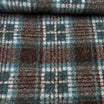
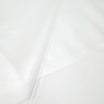

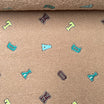
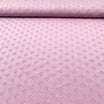
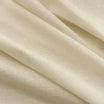
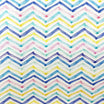
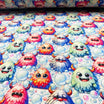




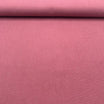
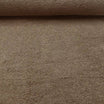

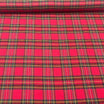

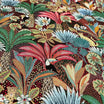
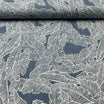

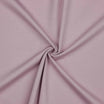
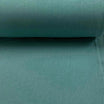

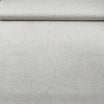

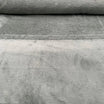
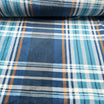
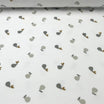
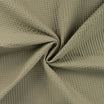


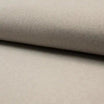


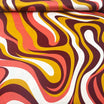

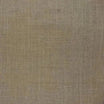
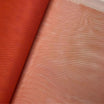
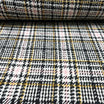
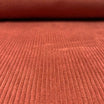
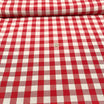

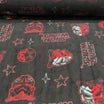



Leave a comment
All comments are moderated before being published.
This site is protected by hCaptcha and the hCaptcha Privacy Policy and Terms of Service apply.